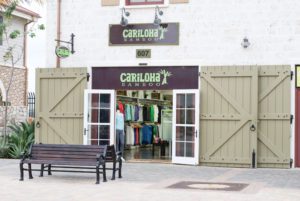While consumers typically don’t convert after their first contact with a brand, many marketers measure as if they do.
But specialty retailer Cariloha, which sells bamboo-based apparel and accessories both online and in 50 stores, is taking a different approach.
Rather than assigning 100% of the credit for a conversion to the last ad a consumer clicked, Cariloha uses fractional attribution, which helps it home in on the channels – and creative – which perform best.
But getting to that point was tough. Cariloha knew search campaigns performed through Google AdWords, but there were gaps when it came to display, said Brian Bollard, digital marketing manager for Del Sol, Cariloha’s parent company.
Cariloha tapped Rakuten Marketing to better understand the contributions of its display ads in remarketing campaigns
Rakuten Marketing’s attribution enabled more granularity around reporting than traditional Google Analytics, according to Bollard. For instance, Rakuten let Cariloha assign scores based on how someone interacts with their ad – if they clicked through, converted or clicked on a tab like “Learn More.”
Fractional attribution also assigned more weight to an ad impression if it resulted in an online sale, versus an online visit.
This kind of optimization is important because while Cariloha does a lot of remarketing, some of its products – such as a $1,100 bamboo mattress – are a considered purchase.
“We know someone may see your ad five to 10 times before they purchase, so our attribution model helps us home in on how much we’re getting out of the remarketing we’re doing,” Bollard said.
Fractional attribution also helped Cariloha be more prescriptive with creative and message cadence.
For instance, if someone is a recurring customer, it doesn’t pay to hit them over the head with bottom-of-the-funnel retargeted messages.
And, in the case of a pricier purchase consideration, like a mattress, Cariloha’s attribution model might help it determine that a Facebook video is better for brand favorability than a sequence of retargeted display ads.
Cariloha now assigns half of its digital marketing budget to dynamic product ads and remarketing on Facebook while the other half goes to desktop search and display on the open web.
New visitors drive about two-thirds of the traffic to Cariloha’s site, while about one-third are returning visitors. However, the conversion rate for returning visitors is nearly three to five times higher than for new visitors because once people discover its brand, they tend to spend more the next time.
 “Most people spend about $100 the first time they come in the store, but when they realize they don’t have to go back on a cruise to buy more, they shop online,” Bollard said. “Our email marketing and retention efforts have been our third-biggest contributor to online sales.”
“Most people spend about $100 the first time they come in the store, but when they realize they don’t have to go back on a cruise to buy more, they shop online,” Bollard said. “Our email marketing and retention efforts have been our third-biggest contributor to online sales.”
Using Rakuten Marketing to optimize its attribution and remarketing model yielded a 42% increase in returning visitor traffic and a 50% in revenue from returning site visitors.
One priority for Cariloha is increased personalization with more A/B and multivariate testing around creative. For instance, Cariloha might show a different product or video to customers returning from a vacation versus someone who came to its site cold after converting through a pay-per-click search ad for “bamboo sheets.”
“We have a general marketing list for everyone who comes to our website, but we’re getting more specific with lists, such as women’s apparel,” Bollard said.
Facebook also drives results for Cariloha, though figuring out the right mix of formats is a work in progress. Right-rail ads don’t perform as well as Cariloha’s news feed and multiproduct ads, yet when it turns off right-rail ads, those other results suffer.
“So we fuse different ad formats together on Facebook to work together,” Bollard said. “We’re testing video ads to see what people interact with and what ultimately brings them back to the website.”















